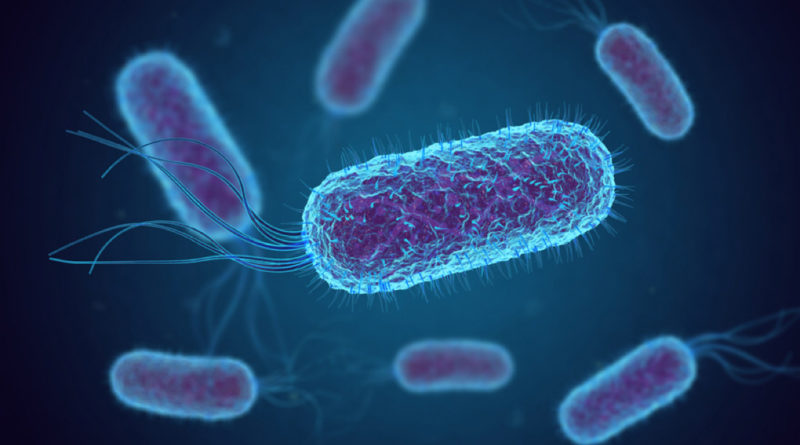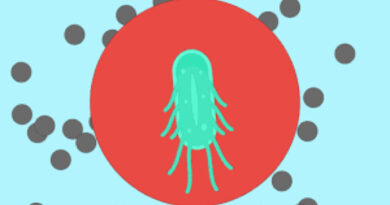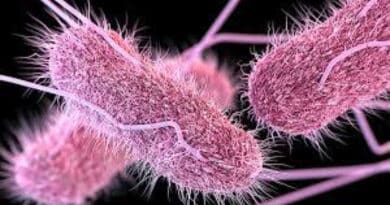Escherichia Coli
This genus is named after Escherich who was the first to describe the colon bacillus under the name Bacterium coli commune (1885). Based on minor differences in biochemical characteristics, colon bacilli were described under various names but in view of the mutability of the biochemical properties in this group, they have all been included in one species Escherichia coli which is further dubdivided into bio types and serotypes.
Unlike other coli forms, E. coli is a parasite living only in the human or animal intestine. Voided in feces, it remains viable in the environment only for some days. Detection of E. coli in drinking water, therefore, is taken as evidence of recent pollution with human or animal feces.
Morphology
E. coli is a gram negative, straight, rods measuring 1 – 3 x 0.4 – 0.7 micrometer arranged in single or in pairs. It is motile by peritrichate flagella, though some strains are non motile. Capsules and fimbriae are found in some strains. spores are not formed.
Cultural Characteristics
E. coli is an aerobe and a facultative anaerobe. The temperature range is 10 – 40 C (optimum 37 C). good growth occurs on ordinary media. Colonies are large, thick, grayish white, moist, smooth opaque or partially translucent discs.
This description applies to smooth (S) form seen on fresh isolation, which is easily emulsifiable in saline. The rough (R) forms give rise to colonies with an irregular dull surface and are often autoagglutinable in saline. the S – R variation occurs as a result of repeated subcultures and is associated with the loss of surface antigens and usually virulence. many pathogenic isolates have polysaccharide capsules. some strains may occur in the ‘mucoid’ form.
Many strains, especially those isolated from pathogenic conditions, are hemolytic on blood agar. On MacConkey’s medium, because o lactose fermentation, colonies are bright pink. Their growth can be inhibited on selective media such as DCA or SS agar, which is used for isolation of salmonellae and shigellae. Growth occurs as general turbidity and a heavy deposit when grown in broth, which disaperses completely on shaking.
Biochemical Reactions
Sugars like glucose, lactose, mannitol, maltose and other fermented with the production of acid and gas. Typically found strains do not ferment sucrose.
In the classification of enterobacteria, four biochemical tests are widely employed those include indole, methyl red (MR), voges – pro skater (VP) and citrate utilization tests, generally referred to by the mnemonic ‘IMViC’.
E. coli is indole and MR positive and VP and citrate negative (IMViC + + – – ). Gelatin is not liquified, H2S is not formed, urea is not split and growth does not occur in KCN medium.

Virulence Factors
Two type of virulence factors have been recognized in E. coli – surface antigen and toxins.
The somatic lipopolysaccharide surface O antigen, beside exerting endotoxic activity, also protects the bacillus from phagocytosis and the bactericidal effects of complement. The envelop or K antigen also afford protection against phagocytosis and antibacterial factors in normal serum.
Most strains of E. coli responsible for neonatal meningitis and septicemia carry the KI envelop antigen which is a virulence factor resembling the group B antigen of meningococci. Fimbriae, if present, also promote virulence.
E. coli produce two kind of exotoxins – hemolysis and enterotoxins. In pathogenesis, hemolysis do not appear to be relevant. However, enterotoxins are important in the pathogenesis of diarrhea. There are three distinct type of enterotoxins have been identified in E. coli – heat labile toxin (LT), heat stable toxin (ST) and verotoxin (VT) also named as Shiva-like toxin (SLT).
Clinical Infections
E. coli produce four main type of clinical syndromes: (1) urinary tract infection, (2) diarrhea, (3) pyogenic infections, and (4) septicemia.
Reference: The Text Book Of Microbiology



